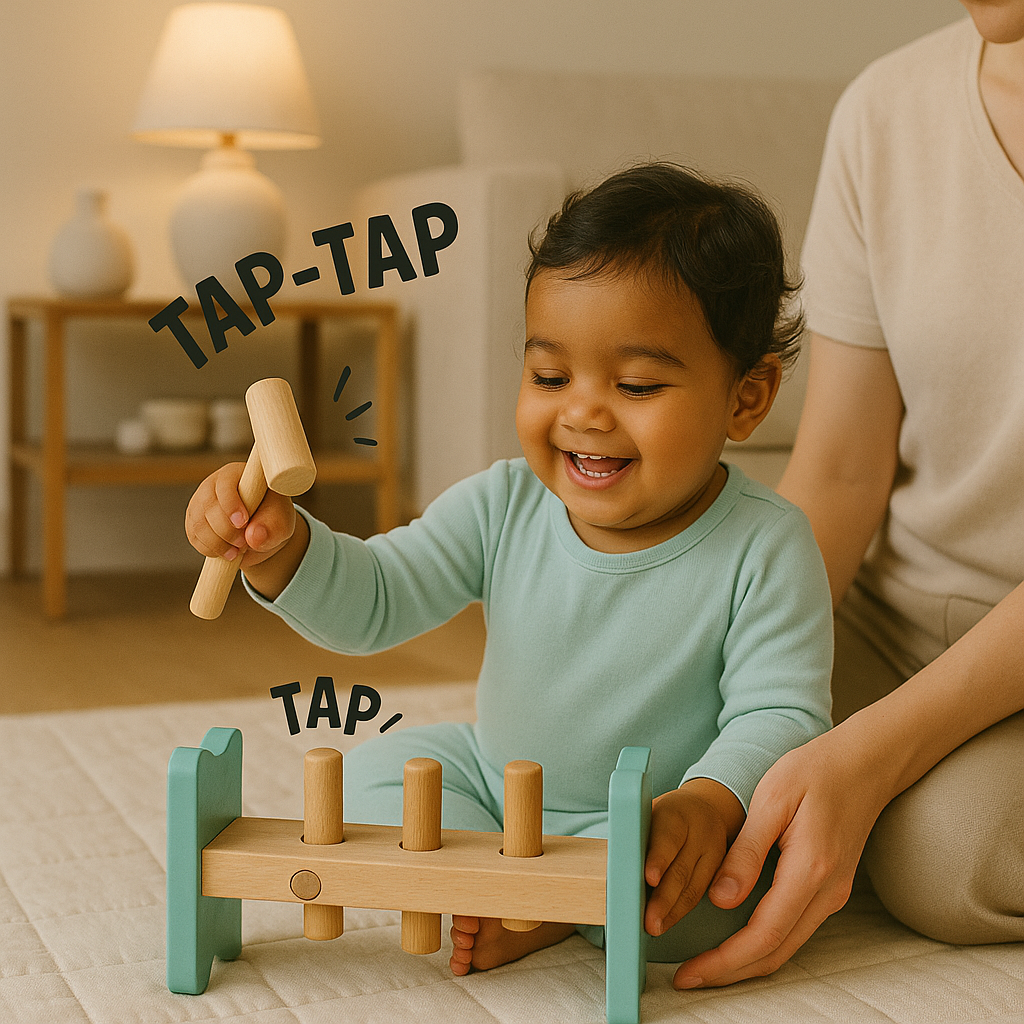
Big Moves, Little Bodies: How to Support Gross Motor Development in Babies
LiLLBUDThere is magic in watching your baby roll over, sit up, or take their first wobbly steps. These big-body movements—gross motor skills—are indications that your baby is getting stronger, more confident, and ready to conquer the world.
From the outside, it might appear as if it's merely play. But within their small bodies, muscles are developing, balance is forming, and the brain is firing on all eight.
What Are Gross Motor Skills?
Gross motor skills are large muscle groups—remember arms, legs, back, and core. They're what assist babies in rolling, sitting, crawling, standing, and ultimately walking and running.
These motions are more than physical. They instruct babies on how to be coordinated, aware of space, and maneuver their emerging bodies.
It begins small. A baby raising their head during tummy time is setting the foundation for crawling. That wobbly effort to sit up? It's training for balance and posture.
Why Gross Motor Development Matters
When your baby engages their big muscles, they're doing more than growing strong. They're
- Developing stamina to move
- Strengthening core muscles for sitting and walking
- Enhancing balance and coordination
- Preparing for milestones such as climbing stairs or dancing to music
Even basic skills such as reaching out while seated or pushing up on all fours require a lot of behind-the-scenes progress.
How to Support Gross Motor Development at Home
Each baby will develop at their own speed, but here are some things you can do to assist:
- Support tummy time early on
- Provide safe space to move about freely—without constantly lifting them up
- Select toys that invite reaching, stretching, or careful movement
- Allow your baby to attempt things on their own (even if they stumble or fall a bit)
And during playtime, the proper toys can encourage those big moves gently.
Toys That Invite Big-Body Movement
At LiLLBUD, we create toys that complement your baby's own learning rhythm. Here are two that promote gross motor skills with the playfulness up front:
Knock-Knock Hammer Toy (12–14 months)
This isn't a toy but a workout for toddlers. With every hammer blow, your little one engages their arms, wrists, and core to align and tap pegs into holes. It promotes controlled movement, muscle strength, and plenty of coordination. And it's so satisfying to hear that soft "knock" with every good hit.
Drop & Pop Peg Toy (14–16 months)
This one’s a crowd favourite! Your baby places a peg into the hole, gently pushes it with a wooden handle, and—pop!—the peg shoots out below. This simple cause-and-effect experience encourages reaching, balance, and bilateral hand use, which are key elements of early gross motor milestones.
You’ll notice them sitting taller, leaning forward with confidence, and using both hands in harmony—tiny signs of big development.
What Parents Often Ask
"What if my baby isn't crawling yet?"
That's fine. Some babies skip crawling altogether and go directly to cruising or walking. What's important is providing opportunities to move around freely and regularly.
"Do toys really help with physical growth?"
Yes. Toys that encourage movement—reaching, pushing, banging—engage muscles, enhance coordination, and make physical growth fun.
Final Word
Gross motor development isn't racing towards milestones. It's providing your baby with space and support to discover their body, their strength, and their independence.
At LiLLBUD, we believe in the magic of meaningful play. With the right toys and lots of support from you, your baby will establish their own rhythm—one big, bold step at a time.
Discover more movement-promoting toys for 12–18 months at LiLLBUD.com—where every wobble, laugh, and step is counted.

